

The State of Delivery Boxes and Autolocks in Rental Apartments: Insights from LIFULL HOME'S
The State of Delivery Boxes and Autolocks in Rental Apartments: Insights from LIFULL HOME'S
In a recent investigation conducted by LIFULL HOME'S, a real estate information service based in Tokyo, the prevalence of delivery boxes and autolocks in rental apartments across Japan was examined. This analysis comes in light of the growing trend toward 'direct delivery' options, which have emerged to reduce the repeatedly high rates of package redelivery, often due to the absence of individuals at home.
The Need for Reliable Delivery Solutions
The Japanese Ministry of Land, Infrastructure, Transport and Tourism has initiated discussions regarding the possibility of normalizing direct delivery methods beyond traditional face-to-face exchanges, such as leaving packages at specified locations like delivery boxes. However, the lack of delivery boxes in many residences poses a significant barrier. Many apartments, especially those with autolocks, can prevent delivery personnel from bringing packages directly to residents' doors, raising security concerns about theft.
LIFULL's survey highlights that nearly 66.3% of rental apartments currently do not feature any delivery boxes, revealing a substantial gap in essential delivery infrastructure. Further, about 47.6% of these properties have autolock systems, complicating the delivery process when residents are not home.
Significant Findings from the Survey
Limited Availability of Delivery Boxes
The survey conducted by LIFULL HOME'S highlighted that approximately 19.5% of rental properties lack delivery boxes and have autolocks installed. This means that in these locations, package delivery would likely require the courier to leave parcels in shared areas, from which they could be more vulnerable to theft. Thus, the challenge for residents living in such apartments is maintaining secure and convenient package retrieval options.
Moreover, the survey examined properties by age, revealing that apartments built over ten years ago showcased a notable deficiency in delivery box installations. For buildings constructed over 30 years ago, the absence of delivery boxes was observed in an astounding 90% of cases, highlighting how infrastructure lagged significantly behind the growth of delivery services over time. Conversely, newer properties (less than 10 years old) tend to have delivery boxes installed, demonstrating a correlation between property age and delivery infrastructure availability.
Impact of Autolock Systems
With autolocks becoming prevalent in apartments, especially those under 15 years old, the convenience of receiving packages through direct delivery methods diminishes drastically if a building lacks delivery boxes. The analysis also noted that as properties age, the presence of these autolock systems increases, creating a dual challenge of security versus accessibility. While newer constructions commonly offer robust security measures, they simultaneously complicate package deliveries when delivery boxes are not placed in these residences.
Comment from LIFULL HOME'S
Toshiaki Nakayama, Chief Analyst at LIFULL HOME'S, noted, “As e-commerce surged during COVID-19, the need for reliable delivery methods became apparent. However, with many older apartments still lacking delivery boxes, residents need to embrace alternatives, like pick-up services from nearby convenience stores or parcel lockers, especially in areas affected by restricted delivery methods.”
LIFULL HOME'S emphasizes the critical role that enhancing delivery infrastructure plays, particularly in urban rental markets where the demand for e-commerce isn't diminishing any time soon.
Moreover, the financial implications for increasing delivery box installations remain daunting for property owners, estimated at 300,000 to 1,000,000 JPY. Hence, the prospect of seeing a substantial increase in delivery box installations across older apartments appears challenging.
Conclusion
As the demand for package deliveries continues to rise, so does the necessity for redefining how these services adapt to existing infrastructures. Residents in apartments without delivery boxes or accessible entryways may continue to face inconveniences when retrieving their parcels. Addressing these challenges will require a collective effort from all stakeholders involved, including property owners and delivery service providers, to ensure that technology is aligned with the evolving needs of consumers.
In summary, this LIFULL HOME'S survey sheds light on an important issue facing many tenants in Japan, urging for a shift towards better long-term solutions for secure and efficient package delivery in rental apartment complexes.

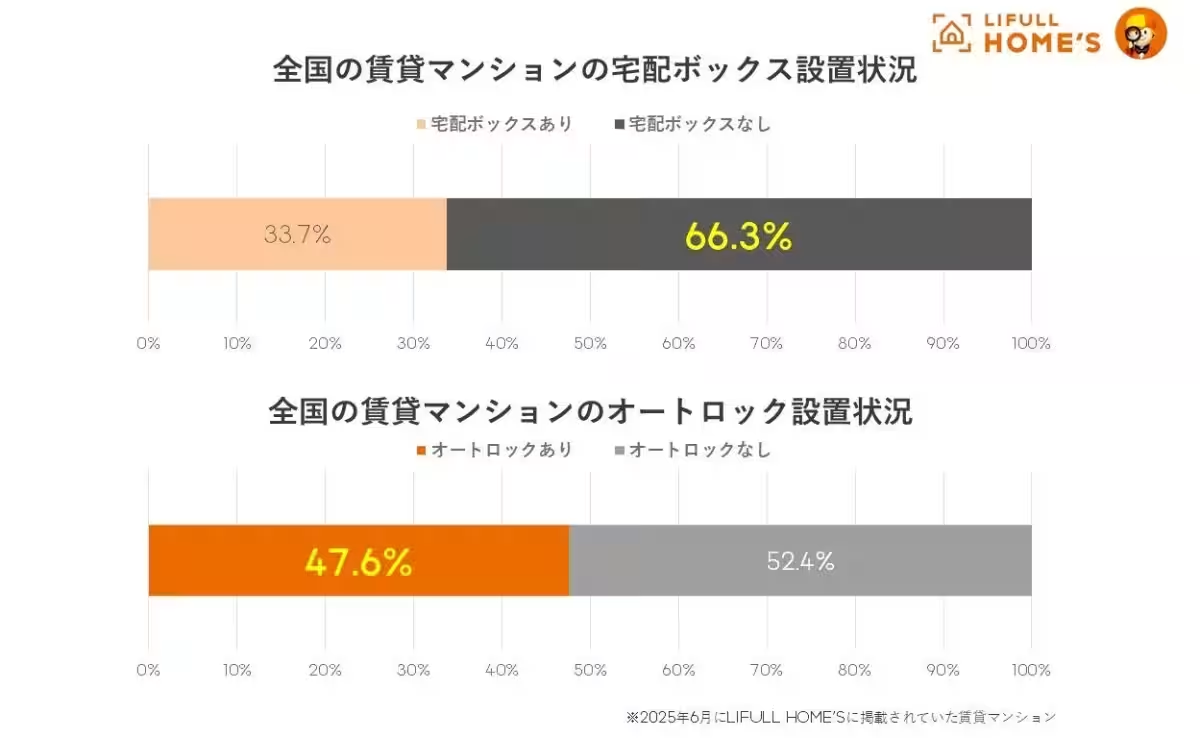
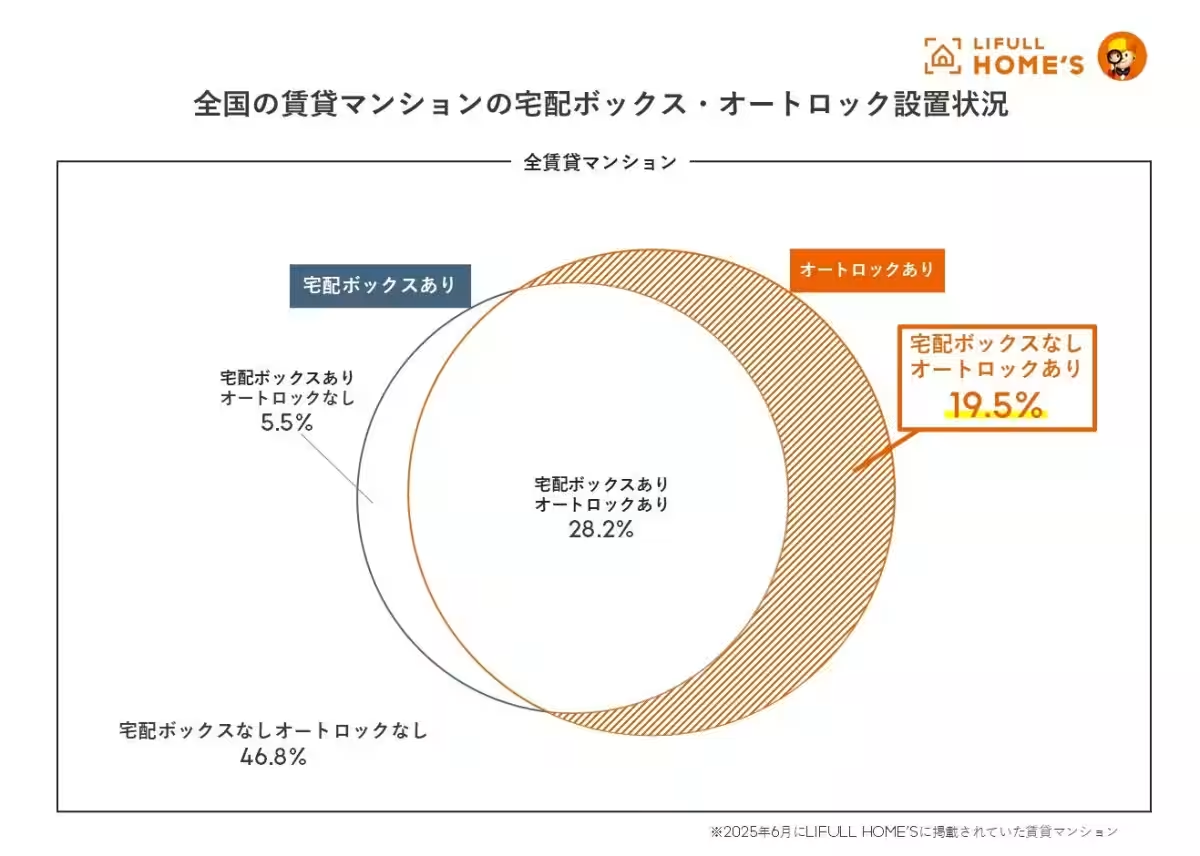
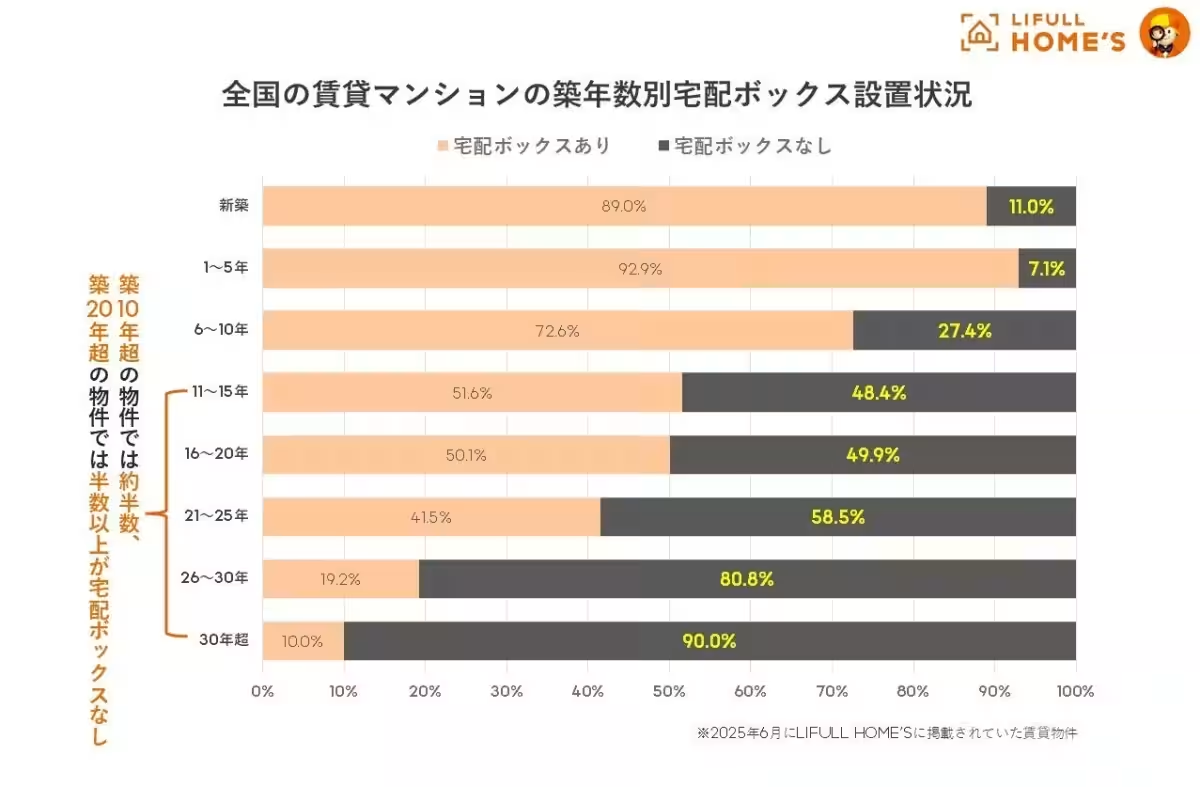
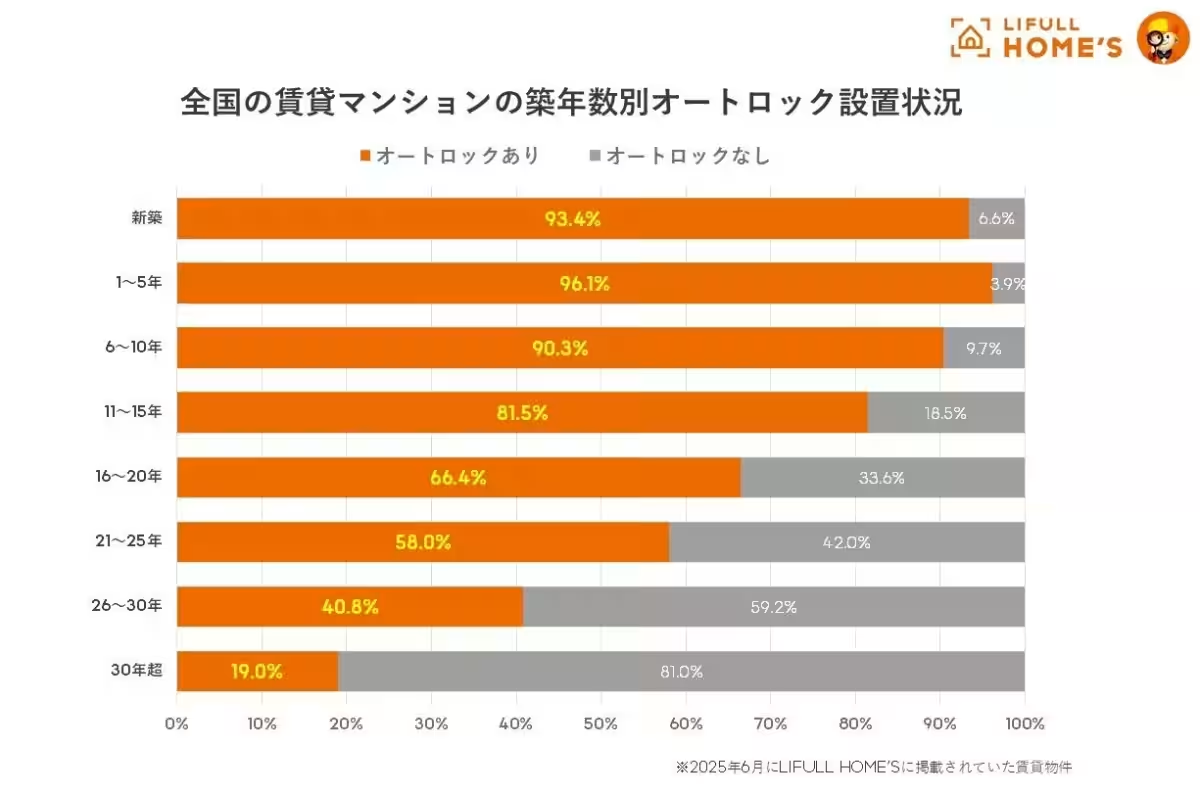
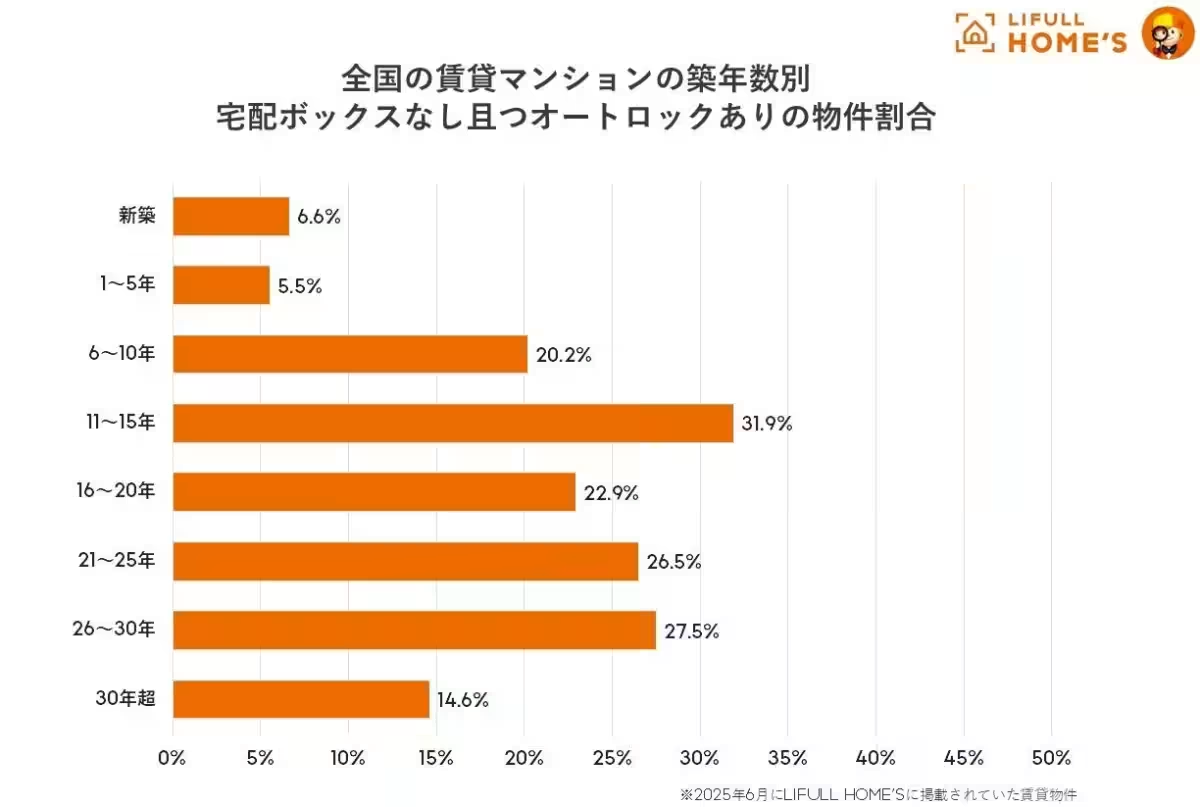


Topics Consumer Products & Retail)










【About Using Articles】
You can freely use the title and article content by linking to the page where the article is posted.
※ Images cannot be used.
【About Links】
Links are free to use.